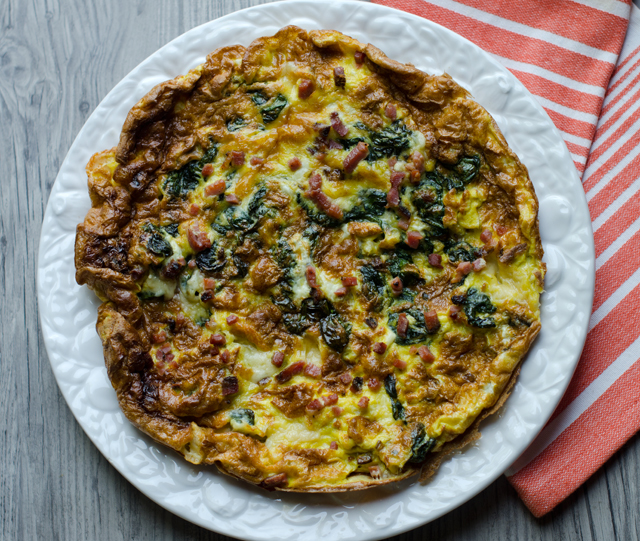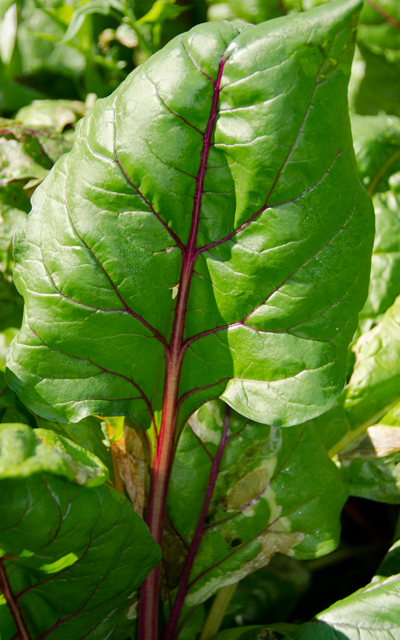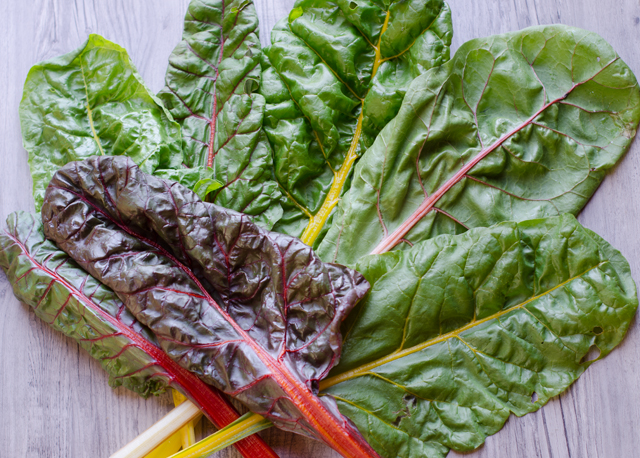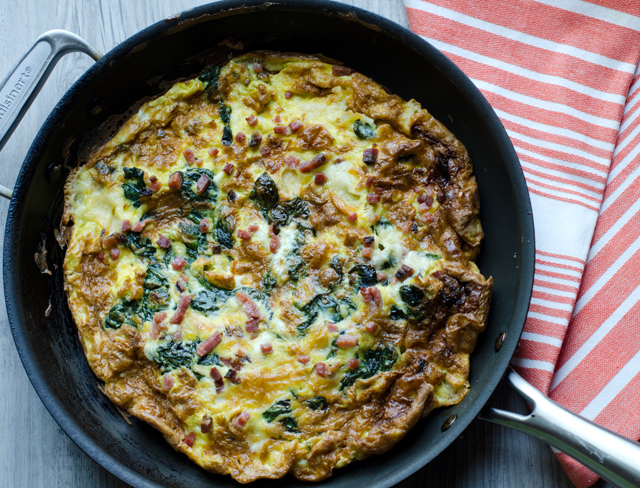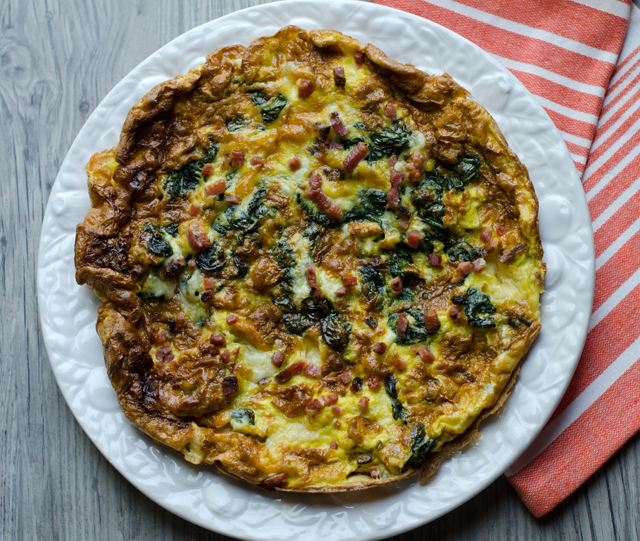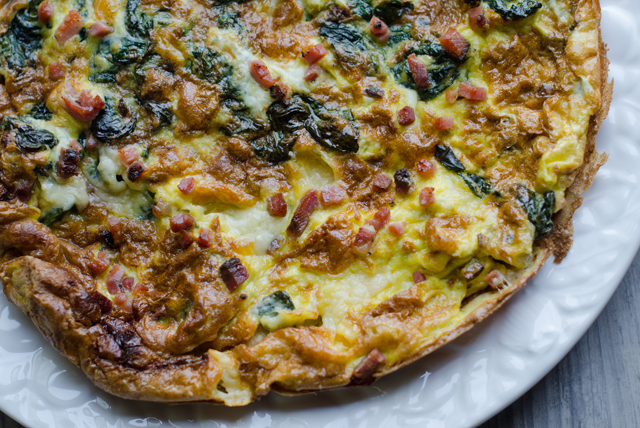After a cold, very rainy spring, summer has arrived with a vengeance. We are experiencing temperatures in the upper 90’s with humidity that makes it feel like 100 degrees plus. With no real rain in the foreseeable future, drip irrigation and sprinklers are keeping the veggies and berries happy. We’ve had a few Sungold tomatoes, bright yellow blossoms are now producing the first zucchini of the season, tart juicy raspberries are beginning to ripen and we have the earliest eggplants ever.
As you enter the garden, there is a large planting of Swiss chard. Not only delicious and nutritious, the stems and veins bring a pop of brilliant color to the garden. Earlier in the spring, Joe planted the faster growing spinach in between each row of chard. The spinach was harvested first before it had a chance to bolt. Now we are enjoying a daily harvest of chard. The leaves are always a dark green but the stems can be white, red, yellow and even an orangey color. Very small leaves can be used in salads, larger leaves need to be separated from the stems but both parts are edible. You can read about more of the basics of chard in this post.
In season, I love making frittatas with ingredients straight from the garden. They are versatile as an on-the-go breakfast, lunch or a no-fuss light supper. In this recipe I take a basic frittata recipe I use as a guideline and use Swiss chard, both stems and leaves, a little Canadian bacon and, why not, a Swiss cheese. When I say Swiss most people are thinking of Emmenthaler, the mild holey cheese that is paired with ham in a sandwich. But there are other Swiss cheeses and Gruyère is one worth trying. Firm and dense, as in, no holes, Gruyere has a rich, creamy, slightly nutty taste.
Some important tips to remember when you are making this or any frittata. Cook any raw vegetable you will be adding to the frittata first. Even quick cooking vegetables like spinach and mushrooms exude water when you cook them. So cook them completely, no one wants a watery frittata! You also should adjust the amount of salt you use based on the saltiness of the ingredients you use like cheese and cured meats.
A heavy bottomed oven safe non stick skillet or a well-seasoned cast iron pan is absolutely necessary to make the frittata. Before you proceed with the recipe be sure the skillet fits comfortably under the broiler without a great deal of maneuvering. The handle on my skillet was a bit high and made getting it in and out of the oven quite challenging. Have thick potholders at the ready so you don’t burn your fingers pulling the pan out of the oven. Once out, leave the potholder over the handle to remind yourself the pan is still hot. Use a spatula to loosen the frittata from the pan and transfer to a platter or cutting board. Of course, there are countless variations of the frittata and as the season moves on my add-ins will change. Whatever you put in yours, it’s a great quick weeknight supper to serve alongside a simple green salad.
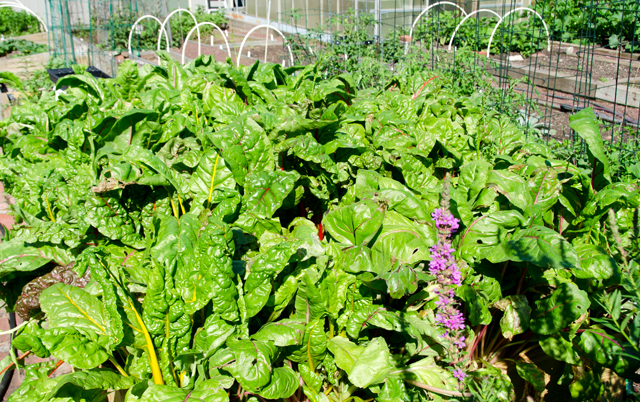
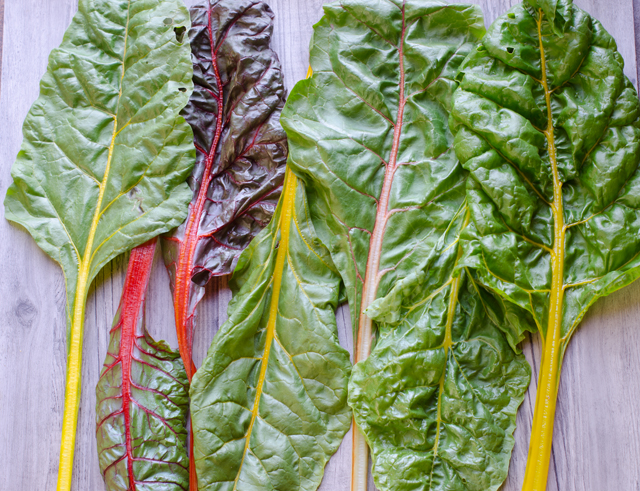
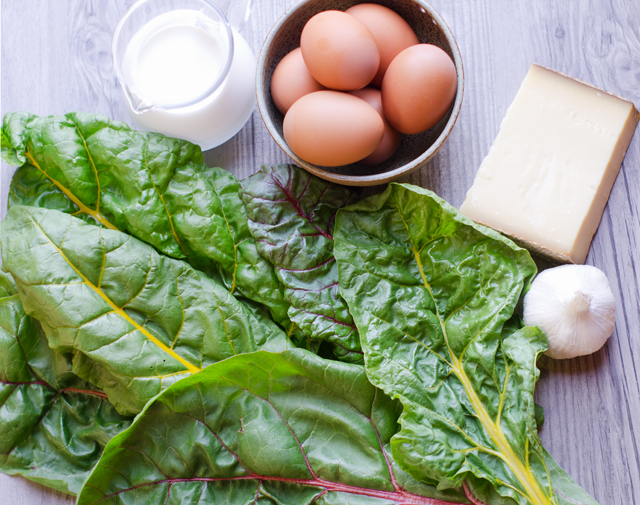
Swiss Chard, Gruyère and Ham Frittata
Makes one 12″ frittata
Ingredients
- 12 large eggs
- 3 T half and half
- Kosher salt and freshly ground pepper
- 2 t olive oil
- 8 c chard leaves roughly torn into 1″ pieces
- ½ to 1 cup thinly sliced chard stems (optional)
- 1 clove garlic, finely minced
- ¾ c shredded Gruyère cheese
- ¼ to ½ c finely diced Canadian bacon or ham
Directions
- Adjust oven rack to upper middle position, about 5 inches away from the heating element. Heat broiler.
- Whisk eggs, half and half, ½ t salt and a grind of pepper in a medium bowl until well combined, about 30 seconds. Set eggs aside.
- Heat oil in a 12-inch non stick skillet over medium heat until shimmering; add stems first if using and saute until softened a bit, 3-4 minutes. Add chard and continue to cook until leaves are wilted and soft, another 4-5 minutes. Add chopped garlic and cook until fragrant.
- Stir shredded Gruyère into the egg mixture. Add egg mixture to the skillet and cook, using spatula to stir and scrape bottom of skillet, until large curds form and spatula begins to leave wake but eggs are still very wet, about 2 minutes. Shake skillet to distribute eggs evenly, cook without stirring for 30 seconds. Sprinkle Canadian bacon over the frittata surface.
- Slide skillet under broiler and broil until the frittata has risen and the surface puffs and turn spotty brown, three to four minutes. Remove skillet from the oven and let stand 5 minutes to finish cooking.
- Using a spatula, loosen frittata from the skillet and slide onto a platter or a cutting board. Cut into wedges and serve.
